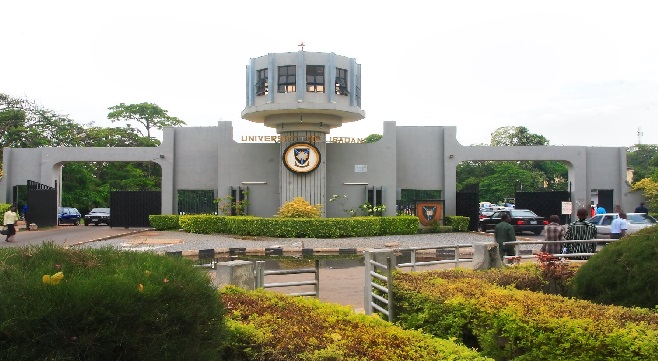“The future will be by pairing the Artificial Intelligence of computers with the cognitive, social and emotional capabilities of humans so that we educate first-class humans, not second-class robots.”- OECD
It is of course no news that virtual learning is geometrically gaining ground as a result of the Covid-19 Pandemic, and the need to stay innovative in furthering education. The change in education’s demands spurred by technology has also made it an endless drive to develop and deliver educational contents that are more engaging and inventive.
On January 2021, the University of Ibadan joined other Nigerian universities, after the Academic Staff Union of Universities called off its prolonging strike action, in disclosing her resumption date for new and existing students. The decision of the university community to engage in virtual learning experience for the first semester of her 2020/2021 session has attracted not only hope but concerns from students and Nigerians generally. We are interested to know the steps the university has taken to have a hitch-free academic session. The question that needs to be asked is, ‘Is the premier university ready for a virtual learning experience’?
Before now, it has been established that the university recognises the need for E-Learning and makes concerted efforts in promoting it for advancing the education of its students. There is the Result Management System (RMS) which enables students to access their results on the web. Also, the university asserts training over three hundred (300) academic staff members on digital skills under Pedagogical Leadership For Africa led by Partnership for African Social Governance Group with funding from the Department for International Development.
Sadly, the implementation of the e-learning plans of the university has always been thwarted by poor infrastructures and other factors. Also, the above steps do not still clarify the university’s readiness for virtual learning as the university maintains a record of inaccessible e-library and internet connection by all students. If adequate direction and measures are not put in place, the dream of virtual classes for student might end up as a nightmare.
Simply put, virtual learning is ‘education by the combination of the internet and computer software.’ It is the application of technology to enhance learning without the need for students to be confined to the four walls of the classroom. Virtual learning has many advantages that make it a good recommendation for education in the digital century. It allows students to develop career alongside furthering education and also maintain a flexible schedule. It also makes learning less rigid and interactive. It hones the digital skills of both students and the lecturers in the use of digital technologies like digital whiteboards, slides, file sharing, digital presentation, attending to assignments and submission online, sub-chat, digital interactions and group-presentations for students. It reduces the cost of traditional learning if it is well implemented. More so, virtual learning promotes teacher-student relationship, facilitates seamless interactions and promotes collaborative learning.
Most especially, it is more student-focused as lecturers pay keen attention to the students, unlike a traditional learning system which is less student-centric as Nigerian universities operate a rigid learning system. Lastly, it advocates for the development and usage of a range of content types that facilitate productive and comfortable learning space for both the students and the lecturer.
While the merits of virtual learning in a digital century have been elucidated, it is relevant for the university community to know what a video software conference or tool must contain to choose an affordable virtual meeting tool and video conferencing software that will meet the need and suitability of both the academic staff and students.
Video conferencing software creates an ultimate classroom setting and provides interactive whiteboard for the academic staff to educate the students. Interactive video conferences allow for face-to-face communications virtually, personalise teaching, analyse progression and facilitate better learning. Lecturers and students can learn, maintain attendance, share notes, interact, have group presentation, record lectures for future references, make and share e-files and communicate through live chats. Simply put, it will enable them to conduct real-time learning remotely and perform everything that is done in a traditional classroom setting.
A good video conferencing tool must have the features that accommodate lower bandwidth without compromising the potentials of communications. It must also provide a high-quality video chats that enable interactions, classroom management tools and it must be accessible by students. So, virtual learning must promote both video and text chats as it must have In-App chat solution to communicate via text messages, host Q&A sessions, reacting to lectures, brainstorming amongst other features.
From the list of video conferencing tools like MirrorFly, Zoom, Microsoft Team, WebEx, Skype and Google Classroom, the University of Ibadan must maintain its prestigious reputation by looking out for the tools that allow collaborative communication system, offer teleconferencing functions and interactive chat for education, promote the participation of students with automated attendance report generation and have a backup feature to store data relating to lectures, study materials, tests, and so on.
Also, the university must attend to the infrastructural challenges that may hinder the smooth flow of the virtual learning experience. Ultimately, the need for digital training for teachers and students to experience an effective use of these conferencing tools must also be given attention. Whilst the above suggestions are adhered to, it is the hope of the student that the University will make virtual learning affordable and accessible to all students by making provisions for inexpensive plans and internet connections through a successful collaboration with the Telecommunication companies (telcos) and Internet Service Providers (ISPs) available in the country.
In conclusion, it is the dying desire of the students of the University of Ibadan to resume learning activities seamlessly without being disturbed by internet connectivity or poor preparation. We remain hopeful of the commitment of our lecturers to digital learning. We hope the university will make the virtual learning affordable and sustainable for the students.




